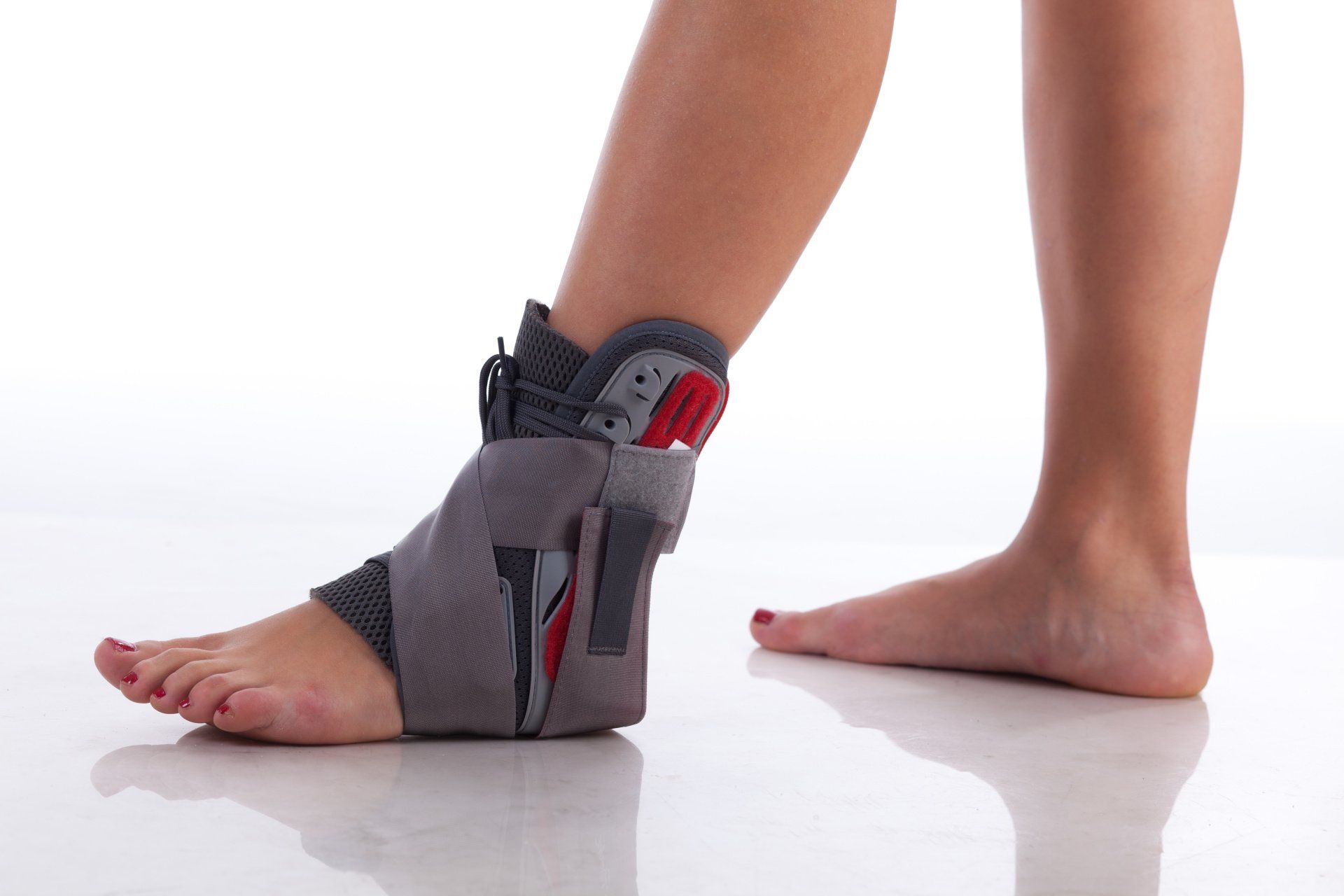Patrick Hall, D.P.M. - Expert Ankle Conditions Doctor in Baton Rouge
Baton Rouge Foot Doctor for Ankle Conditions
Dr. Patrick Hall is a long-standing, respected expert in the field of podiatric medicine. He is board-certified by the American Board of Podiatric Surgery and is a co-author of the 4th edition of McGlamry’s Comprehensive Textbook of Foot and Ankle Surgery.
Ankle Instability
The ankle joint has several supporting structures on the outside (or lateral side) of the ankle. The most frequently injured supporting structures are referred to as the lateral ankle ligaments. This is a collection of three ligaments that stabilize the ankle and resist excessive twisting or rolling of the ankle joint. These ligaments help when walking on uneven surfaces, stepping on a piece of gravel, or coming down a flight of stairs. Ligaments are thick bands of tissue that run from one bone to another. Their primary job is to hold bones in their normal position. When one or more of these ligaments undergoes multiple injuries, they can either fail to heal or heal in a loose or weakened position. If that occurs, then the ankle joint becomes unstable. The result is a loose joint that frequently “gives out” during walking, running or other activities
Ankle Arthritic Pain
A joint is a hinge between two bones. Cartilage is a cushion that separates two bones and allows the hinge to glide like the hinge of a cabinet door. Arthritis is the wearing down of that cartilage cushion. This results in varying degrees of popping, grinding and limited range of motion through the joint or hinge. This can feel like having gravel in the joint. As arthritis progresses, bone spurs often develop around the affected joint. Arthritis can occur in the ankle joint from an injury such as a broken bone, medical conditions like gout or rheumatoid can result in arthritis, and simple age-related wear-and-tear can cause the cartilage to deteriorate.
Ankle Tendinitis
Tendons are basically ropes that run from a muscle to a bone. When a tendon contracts, bones and joints are put into motion. Tendons naturally have an amount of stretch or elasticity like a rubber band. When a tendon is overused from too much activity or when it is overstretched in an abrupt injury, then a painful inflammation can occur calledtendinitis. There are numerous tendons that run across the ankle joint into the foot. Having aflatfootcan overstress the tendons that hold up the arch, creating a tendinitis called posterior tibial tendinitis. Excessive yardwork, stair-climbing or general over-activity can put too much pressure on the back of the heel bone creating Achilles tendinitis. Another common tendinitis is called peroneal tendinitis. The peroneal tendons run along the outside of the ankle. These tendons can be injured with a severe ankle sprain.
Ankle Tendon Ruptures
A rupture of a tendon means a tear or severing of the tendon. A tendon can be ruptured with an abrupt injury such as playing soccer or basketball. The most common ankle tendon rupture from an abrupt injury is the Achilles tendon. A tendon can also rupture or tear from gradual overuse. The most common ankle tendon for this type of tear is an arch tendon called the posterior tibial tendon. Posterior tibial tendon tearing occurs in patients with collapsed arches or flatfeet. As is the case with fractures, not all tendon ruptures require surgical repair.
Ankle Fractures
A fractured bone is the same as a broken bone. This is like taking a stick and twisting until the stick fatigues and splinters. The ankle joint is made up of three bones (fibula, tibia and talus) and any of these bones can be fractured. Most ankle fractures are rotational or twisting injuries. The most common examples are stepping in a hole in the yard, tripping while stepping off a familiar curb, or slipping off the bottom of a staircase. Ankle fractures can also occur from motor vehicle collisions or a fall from a height as low as 2 to 3 feet. If a fracture is called non-displaced, this means the broken pieces of bone are still in good alignment. Non-displaced fractures can often be treated without surgery. If fracture is displaced, this means that the broken pieces of bone have moved out of alignment and are no longer touching; surgery may be necessary to bring the pieces back into alignment for the bones to heal.
Blogs on Ankle Conditions & Treatment Options for Baton Rouge Patients






